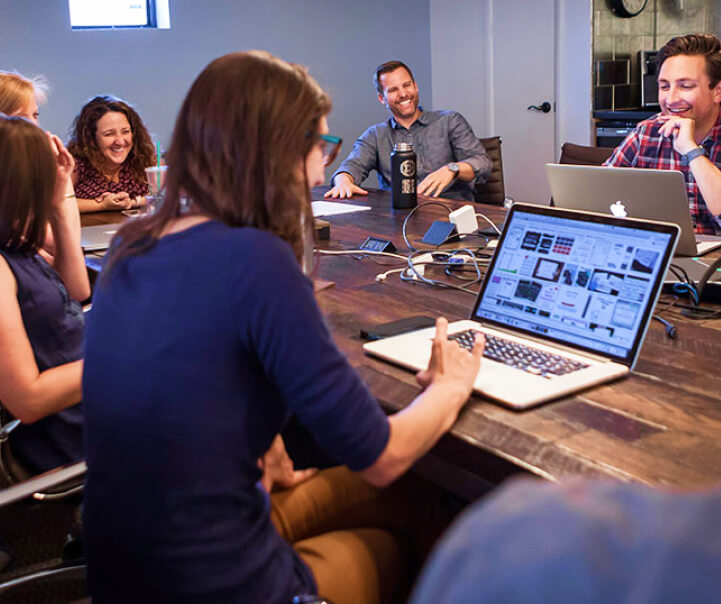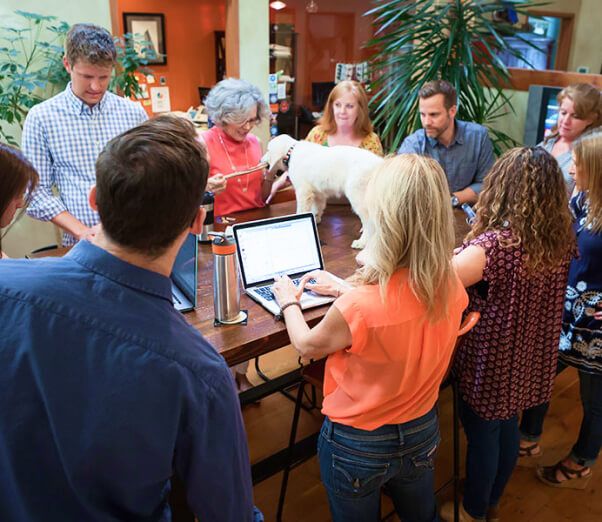SXSW 2022 Themes: Learning, Returning to Work and Resiliency in a Post-Pandemic World
This is the third in a three-part series about the key themes from South by Southwest® (SXSW) 2022 from our colleagues Jim Licko and Rachael Roark.
The pandemic feels like it’s coming to a close, but it has left a new era in its wake. It has changed how we learn, sources we trust when seeking information, how we prefer and expect to be able to work and even how we manage our resiliency.
The Way We Like to Learn is Changing
The way we used to learn was controlled by the search bar to pull up relevant information from the web. That is shifting as different ways of learning gain traction. For example, more and more people want to ask their questions using a voice assistant. During his eye-opening session, Nick de la Mare, managing director and head of design for North America for Fjord (part of Accenture interactive), mentioned that 1.2 million people use a voice assistant daily.
The increasing interest in different ways of learning also has people seeking information from different sources. People are now looking to businesses as a source of reliable information rather than the government, media outlets or non-governmental organizations (NGOs). With people shifting their trust to brands for reliable information, brands need to be conscious of not overloading people with information because trust is built through a slow exchange of information over time.
In our modern world of constant information inundation, people’s attention is split more than ever before. For every half hour, we have two minutes of concentrated time. Brands should leverage information layers to distribute key information in bite size pieces through a content calendar that speaks to people in different stages of the user journey.
Our Sources of Trusted Information Have Changed
Several SXSW 2022 sessions addressed the issue of misinformation and disinformation, and a few brought up the impact that our own personal online behavior has had on the spread of both. Not only do we often function in our own social media echo chambers —we’ve also become accustomed to getting immediate answers (Google, Alexa, Siri, etc.). And since that information and those answers to our questions aren’t always perfect, we have what many are calling “information bankruptcy,” where we have so much information at our fingertips, but we don’t trust any of it (in other words, the algorithm has cried wolf too often for our own liking).
The takeaway for marketers is to not just give our audiences the information they’re looking for. In order to avoid overwhelming individuals with information, we need to focus on what they might be asking — and when — and consider taking a more human approach to information-gathering, anticipate potential questions and provide answers within the information being searched.
The takeaway for us as individuals is this: Vary your news sources so you can hear multiple sides of an issue. Be open to “both and” rather than “either or.” And as Civic Nation’s Valerie Jarrett put it, get curious with those with whom you disagree. “You need to work with and listen to people even if you disagree with 99% of what they stand for,” she said. “That 1% can be vitally important, and if you simply walk away, the other side wins 100% of the time.”
The Pandemic has Changed How We Prefer to Work
The pandemic cut 10 years off the adoption rate for virtual work, virtual learning and virtual healthcare. And while the past two years have certainly led to an “anyone can work from anywhere” mindset, one of the “10 non-obvious megatrends” from Rohit Bhargava is a return to what he calls “the Human Mode.” Most of us are craving human interaction after countless Zoom and Google Meet meetings over the past 730 days (or more).
Professor Scott Galloway mentioned that the number of deep and meaningful relationships we have is the number one indicator of happiness — and that fostering those relationships is exponentially more difficult in a virtual world.
Employers need to find ways to foster in-person interactions while also allowing workers some virtual autonomy (if they want to keep their “rock stars” and recruit new talent). Similarly, this move back to “humanity” needs to be inclusive (15% of the population has some form of a disability, Bhargava said). Ideas “made with empathy” — whether they’re new companies, new products or new ways we can all do our work and collaborate — need to be a part of our strategy moving forward.
How Do We Stay Resilient in the Face of Change?
By living through the coronavirus pandemic, we have experienced what is known as a black swan event — a once-in-a-lifetime event that’s unforeseen and has severe and lasting repercussions. We are all, universally, experiencing post-traumatic stress. The question is, how do we continue to manage and replenish our resiliency?
In his talk, John Maeda, the chief technology officer for Everbridge, encouraged people to focus on what they can change and control, with a reminder that there are many things we cannot change that shape our day-to-day lives (the seasons, the changing of the tides, etc.).
Those who are most resilient are students of change and are risk-versed, not risk-averse. Maeda opened and closed his session with the perspective that you cannot have resiliency without adversity, and that adversity is essential for growth.
Speaking of Change and the Workplace
Join GFM|CenterTable and B:Civic for a roundtable discussion entitled, “What Great Resignation?” We’ll be discussing the trends we’re seeing from multiple industries when it comes to employee behavior, retention, hiring, and most importantly – what we can do as employers and leaders to attract and retain great team members.
When: Thursday, April 7 at 1 p.m. Mountain Time
Where: You can register for the virtual event here.



